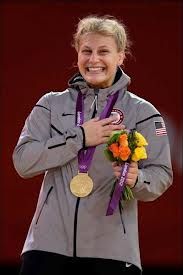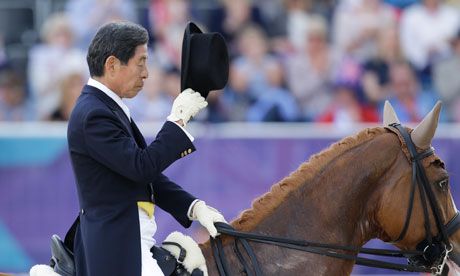Yup. That’s what Harry Frazee traded the Bambino for.
Now at 90+ minutes that’s a little bit long even for a World Series game where they’ll dust the plate after every pitch so that everyone gets their TV time so I’m in the market for some kind of short and snappy YouTube vignette to symbolize the BoSox. You know, something like this-
The story behind the Rally Squirrel is this-
Rally Squirrel is the name given to an American gray squirrel (Sciurus carolinensis) which appeared on the field and ran across home plate at Busch Stadium during a 2011 National League Division Series (NLDS) Major League Baseball game between the Philadelphia Phillies and St. Louis Cardinals on October 5, 2011. The squirrel captured American media attention, and was adopted as an unofficial mascot by the Cardinals and the populace of St. Louis. The Cardinals would go on to win the 2011 World Series.
On October 4, a gray squirrel appeared in the outfield during Game 3 of the Phillies-Cardinals National League Division Series, causing an interruption in play.
During the fifth inning of Game 4 on October 5, a squirrel again appeared on the field. Play was not interrupted, but the squirrel caused considerable confusion, running across home plate as Phillies pitcher Roy Oswalt was delivering a pitch to Skip Schumaker. The squirrel then jumped into the stands. Umpire Ángel Hernández called the pitch a ball; Oswalt and Philadelphia manager Charlie Manuel argued, unsuccessfully, that Oswalt had been distracted by the squirrel and that “no pitch” should be called. Manuel later avowed that, if he had a firearm, he would have shot the obstreperous rodent. Some commentators speculated that the October 4 and October 5 squirrels were the same animal, but this was not proven.
Now I’ll not be rooting for the Sox much I think, though I really have nothing against them except that the game they play is not Baseball but some kind of weenie contest where Pitchers hide in the dugout instead of standing at the plate and their at bats are given to overpaid has beens who are no longer good enough to take the field. Connecticut has always been a battleground between those who hate the Yankees with the burning white hot passion of a thousand suns and people who like their Baseball easy and are willing to let someone else bankroll it. Of course there is no arguing with the results- 25% of all Championships in the last hundred years or so.
The Cardinal program is kind of like the Senior League version of that.
St Louis Cardinals: the nicest fans in baseball?
David Lengel, The Guardian
Tuesday 22 October 2013 11.41 EDT
Maybe it’s best for them to stay in groups whilst away from St Louis, because Cardinals fans are under unprecedented fire lately. Why? For being Cardinals fans. What’s the perception driving detractors of St Louis’ fans? That they’re a sickly-sweet group of do-gooding polite Midwesterners that refuse to get upset with their own players even when they suck. That sometimes, they even have the nerve to applaud the opposition! (See this blog on Deadspin and this on Bloomberg). This hatred is exacerbated when the Cards crush you season after season of course, to the tune of 19 pennants and 11 World Series titles. Yes, outsiders are starting to notice such dominating play, and the Yankees, long the premier public enemy for baseball fans, may soon have company.
Some selected stories for your attention-
Red Sox vs Cardinals: an old time World Series with a new spin
Harry J Enten, The Guardian
Wednesday 23 October 2013 08.55 EDT
(I)t hasn’t been since 1999 in which the teams with the leagues’ best records competed against each other in the World Series. For an old-time baseball fan like my father, who can’t quite figure out what a wild card is exactly, this World Series offers a respite to those who believe the regular season should count for a lot more than it currently does.
Second, it is fitting that such a series would take place in Boston and St. Louis. Both teams played in their respective leagues and respective cities when the American League was founded in 1901. Only 16 of the now 30 major league franchises were actually in existence 112 years ago.
The percentage dips even lower when you consider teams that were playing in the cities they do now. Only four American League teams – the Indians, Red Sox, Tigers, and White Sox – and five National League teams – the Cardinals, Cubs, Reds, Phillies, and Pirates – were in their current cities when the current Major League alignment came into existence.
…
(I)t wasn’t until the 1920s when the Yankees began their run of World Series victories. One could argue that the Boston Red Sox were the American League team of the first quarter of the 20th century. The Yankees weren’t even the best team in New York, as that honor fell to the National League New York Giants.This World Series promises to reset the dial to a non-Yankee ruled world. Both the Cardinals and Red Sox have won two World Series in this century, tied with the Yankees. The winning team will have won the most World Series in the 21st century and ever so slightly knock the Yankees back.
Red Sox 2013 have many parallels to 2004 World Series winners
Hunter Felt, The Guardian
Monday 21 October 2013 12.00 EDT
It could be argued that no team had ever had an unlikelier road to the World Series than the 2004 Red Sox, to the point where the World Series itself ended up being entirely anticlimactic. The 2004 St Louis Cardinals, who had won 105 games in the regular season and had, in Albert Pujols, the Greatest Player In Baseball Not Named Barry Bonds, barely put up a fight during the four-game sweep. The Cardinals were just on the wrong side of history. When asked if St Louis would have done better in the World Series if they had home field advantage, which the wild card winning Red Sox only held because the American League had won that year’s all-star game, manager Tony La Russa would sarcastically offer that maybe his team would have actually won a single game.
Boston Red Sox vs St Louis Cardinals: position by position guide
David Lengel, The Guardian
Tuesday 22 October 2013 14.45 EDT
Overall prediction
I learned my lesson last time after picking against St Louis in the past… Cardinals in seven games.
A Rematch Red All Over (Except the Green Monster)
By TYLER KEPNER, The New York Times
Published: October 22, 2013
THEY LOVE L.A. This World Series matchup very well would not have happened without the local cable contracts in Southern California. The Angels, flush with cash from a deal with Fox, showered $240 million on the Cardinals’ Albert Pujols after the 2011 season. The Cardinals chose Michael Wacha with their compensatory draft pick, and they parceled out the savings from Pujols’s rejection to re-sign Yadier Molina and Adam Wainwright and sign Carlos Beltran. Seeking stars for their new TV deal, the Dodgers bailed out the Red Sox in August 2012 by trading for Josh Beckett, Carl Crawford and Adrian Gonzalez, three stars with sinkhole contracts who had grown miserable in Boston. With more than $260 million off their books in one deal, the Red Sox reset their roster by signing seven free agents (Ryan Dempster, Stephen Drew, Jonny Gomes, Mike Napoli, David Ross, Koji Uehara and Shane Victorino) without committing more than $39 million to any of them.
RUNNING GAME Only three teams stole more bases than the Red Sox, who succeeded on 123 of 142 attempts in the regular season. They just kept running through the playoffs, swiping 11 bases in 13 attempts. But Yadier Molina is probably the best in the majors at shutting down the running game. Opponents attempted just three steals (two successfully) in the playoffs off Molina.
STYLISH BIRDS As they seek another World Series victory, the Cardinals have already claimed one crown this year: Uni Watch ranked their uniforms first among all teams in baseball, the N.F.L., the N.B.A. and the N.H.L. “M.L.B.’s best-looking team looks even better this season,” wrote Paul Lukas, “thanks to the addition of that great retro-style alternate jersey.” The Cardinals wear the alternate “St. Louis” jerseys on home Saturdays, which means they should wear them for Game 3. The best-dressed of all is the veteran reliever Randy Choate, who wears old-style striped stirrups to accentuate the Cardinals’ classic look.
Up Close, Fenway’s Green Monster Not So Green
By THE ASSOCIATED PRESS
Published: October 23, 2013 at 10:31 AM ET
Up close, Fenway Park’s famous left-field Wall is pocked with thousands of dents and white scuff marks left from decades of doubles that banged off of its facade. Some of the spots are so well-defined that you can even make out the red stitches from the baseball, the Rawlings logo or the Major League Baseball insignia left behind on the green background.
“All those dents out there, you can’t help but realize who put them there. That’s history,” Red Sox left fielder Jonny Gomes said Tuesday on workout day for the World Series. “I come to work every single day in a museum. It’s not a baseball field, it’s a museum.”
Fenway itself is 101 years old, but the 37-foot Wall was added in 1934, first painted green in 1947 and rebuilt in 1976, when it was covered in a hard plastic that is repainted before opening day every spring. Dubbed the Green Monster because, just 310 feet from home plate down the line, it’s a scary sight for pitchers, it runs from the left-field grandstands to the 379-foot mark in left-center.
And, every couple of inches, there is a ding or a streak from a ball that bounced off it. It could be a Red Sox batter or an opponent. Maybe it was in batting practice, or maybe in a game. Some were fly balls that would have been caught in another park, and others would have been home runs elsewhere turned into a Fenway single or double.
What impresses you most about Fenway is how small it is (some would say intimate, but let’s call a spade (♠) a card symbol that looks like a shovel if you turn it upside down). Thus the ‘Green Monster’. The other side is a street and without the height it’s just too damn easy to knock one out of the park. The only intimidation is in your mind as a batter and as a fielder you get used to playing it like a jai-lai backstop.
The Great God Citgo looms over all and even by drunken triangulation with the Pru(dential Tower) gives you a rough idea if you’re puking above or below Kenmore Square or are even on the right side of the Charles.
Thanks for holding my hair.
And finally-
24-0 and Pitching in Japan’s World Series
By DAVID WALDSTEIN, The New York Times
Published: October 23, 2013
Unless the typhoon season disrupts the schedule of the Nippon Series, Masahiro Tanaka will take the ball for the Pacific League’s Tohoku Rakuten Golden Eagles in Game 1 Saturday night, looking to continue one of the most remarkable runs by a pitcher in professional baseball, and doing it in a region desperate for positive events in the years after a devastating earthquake and tsunami.
So far, nothing has been able to disrupt Tanaka, who finished the regular season 24-0 with a 1.27 earned run average and a save, then was 1-0 with a shutout and a save in the playoffs after Rakuten won its first Pacific League title. In the regular season he faced 822 batters and gave up only 6 home runs. Incredibly, his performance came in a season marked by a juiced ball controversy: Wladimir Balentien of the Tokyo Yakult Swallows hit 60 home runs to shatter Sadaharu Oh’s cherished record of 55 homers, set in 1964.
…
According to Jim Small, Major League Baseball’s vice president for Asia, the success of Japanese players in the United States, combined with the popularity in Japan of the World Baseball Classic, has brought a more open, international approach to their game, and Balentien, who is from Curaçao, was generally embraced for his feat.“I think there was genuine excitement and happiness here (at least from Swallows fans) to see him break the record,” Small wrote in an e-mail message. “Japan has changed a lot in the last 10 years.”
Small, who has lived in Japan for 10 years, also said the success that Tanaka has brought to Rakuten is measured in more than just his unblemished record. Rakuten plays in Sendai, a city devastated by the 2011 earthquake and tsunami that damaged their stadium. The area has not recovered fully, but its underdog team, led by Tanaka, is looking to overthrow the popular and mighty Yomiuri Giants of the Central League in the Nippon Series.
“You have to put what he did in context because of what that team did,” Small said in the e-mail. “It was their first league title and has absolutely galvanized that region. Tens of thousands of people are still in shelters and more than 100,000 had to leave the area to find work elsewhere. It is a seriously depressed area. Tanaka and the Eagles have given people there so much to be happy about. It is truly amazing.”
“World” Series is kind of a misnomer. I prefer ‘Major League Baseball Championship’ or ‘Fall Classic’.
The Matchups-
- Wednesday 10/23 Game One: Jon Lester (15 – 8, 3.75 ERA L) vs Adam Wainwright (19 – 9, 2.94 ERA R)
- Thursday 10/24 Game Two: John Lackey (10 – 13, 3.52 ERA R) vs Michael Wacha (4 – 1, 2.78 ERA R)
- Saturday 10/26 Game Three: Joe Kelly (10 – 5, 2.69 ERA R) vs Clay Buchholz (12 – 1, 1.74 ERA R)
- Sunday 10/27 Game Four: Lance Lynn (15 – 10, 3.97 ERA R) vs Jake Peavy (12 – 5, 4.17 ERA R)
Jon Lester is 2 – 1 in the post-season 16 hits and 5 runs in 16 and a 3rd innings pitched for an ERA of 2.33. Adam Wainwright is also 2 – 1 with 17 hits and 4 runs in 23 innings pitched for an ERA of 1.57. Advantage, St. Louis.

 In 1851 a radical looking schooner ghosted out of the afternoon mist and swiftly sailed past the Royal Yacht stationed in the Solent, between the Isle of Wight and the south coast of England, on an afternoon when Queen Victoria was watching a sailing race.
In 1851 a radical looking schooner ghosted out of the afternoon mist and swiftly sailed past the Royal Yacht stationed in the Solent, between the Isle of Wight and the south coast of England, on an afternoon when Queen Victoria was watching a sailing race. At the age of 15, already an elite swimmer, Ms. Vollmer, from Granbury, Tex., was taken to a local doctor after experiencing dizzy spells while training. Doctors discovered she had an abnormal heartbeat and set up a procedure to correct it. But they then discovered she had a genetic cardiac electrical disorder called long QT syndrome, which could lead at any moment to sudden cardiac arrest.
At the age of 15, already an elite swimmer, Ms. Vollmer, from Granbury, Tex., was taken to a local doctor after experiencing dizzy spells while training. Doctors discovered she had an abnormal heartbeat and set up a procedure to correct it. But they then discovered she had a genetic cardiac electrical disorder called long QT syndrome, which could lead at any moment to sudden cardiac arrest. In November 2007, a man pleaded guilty in a federal court in Dayton, Ohio, to illicit sexual conduct involving a 13-year-old girl. He was a judo coach, and the girl was a student he had trained closely and brought to international tournaments. Her name was given in court papers simply as “K.H.” or “the victim.” [..]
In November 2007, a man pleaded guilty in a federal court in Dayton, Ohio, to illicit sexual conduct involving a 13-year-old girl. He was a judo coach, and the girl was a student he had trained closely and brought to international tournaments. Her name was given in court papers simply as “K.H.” or “the victim.” [..] The crowd did not go wild for Hiroshi Hoketsu of Japan as he rode Whisper out on to the sand of the Greenwich Park equestrian arena at one o’clock on Thursday afternoon. It wasn’t a question of bad manners; more a question of consideration.
The crowd did not go wild for Hiroshi Hoketsu of Japan as he rode Whisper out on to the sand of the Greenwich Park equestrian arena at one o’clock on Thursday afternoon. It wasn’t a question of bad manners; more a question of consideration.
Recent Comments